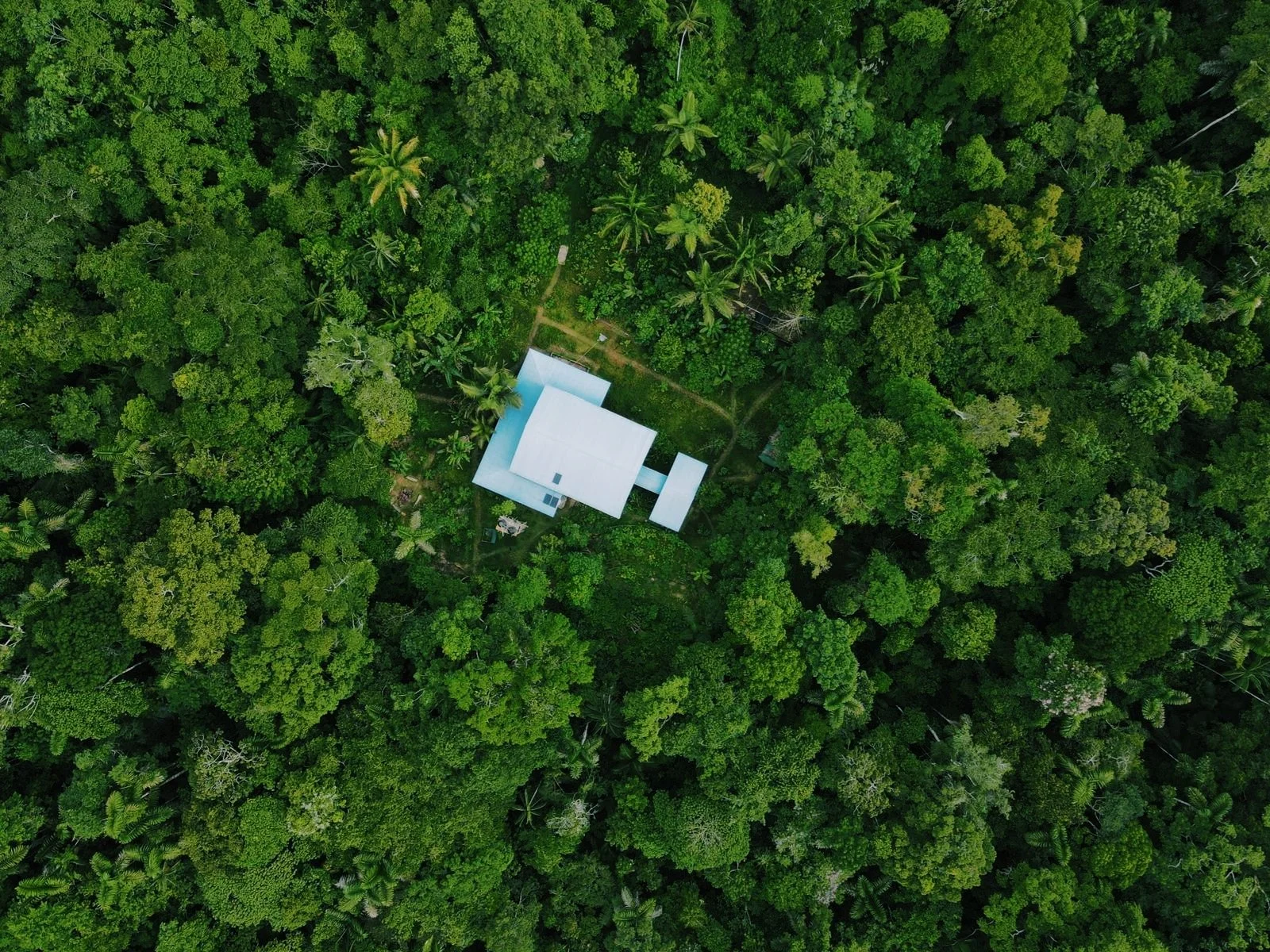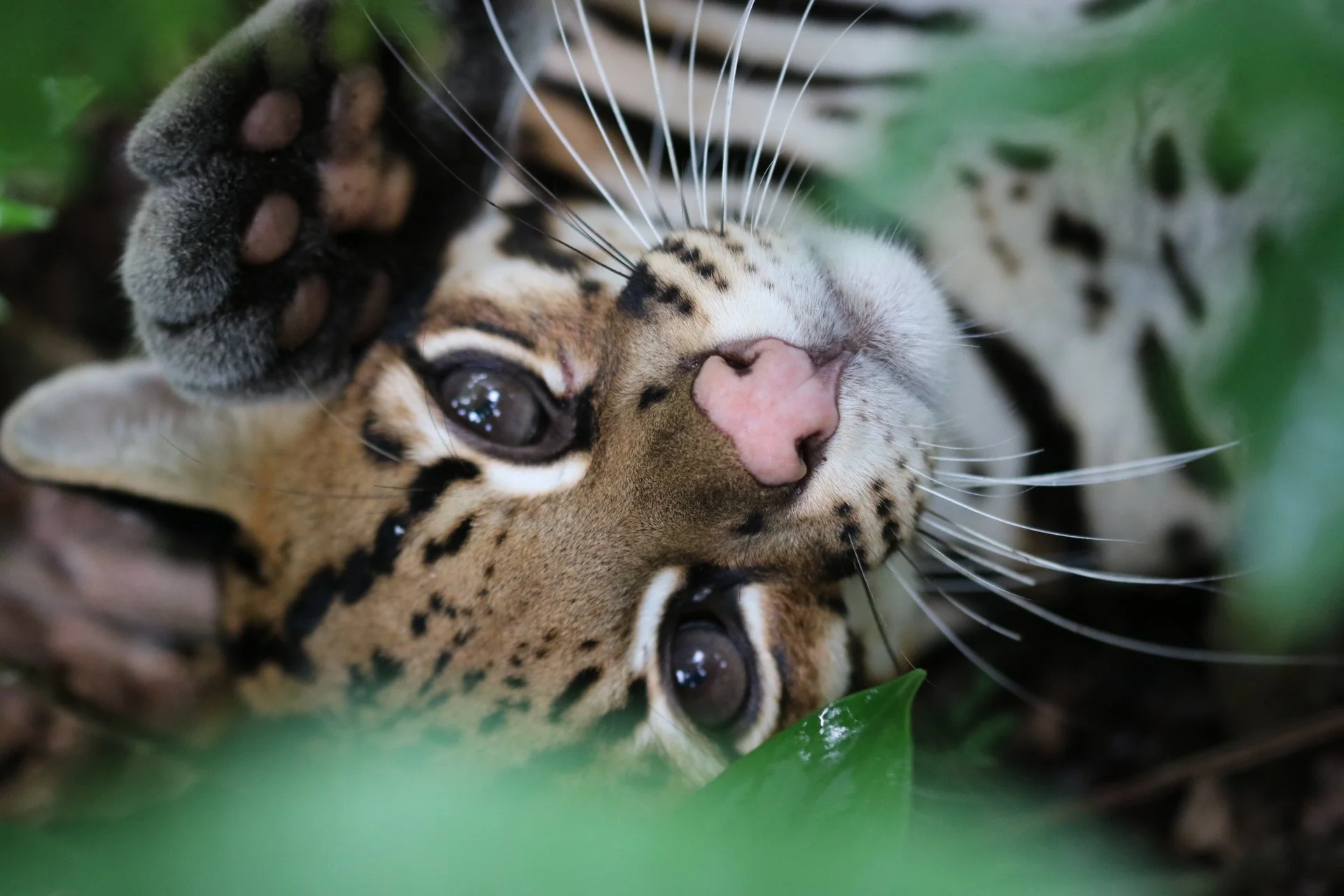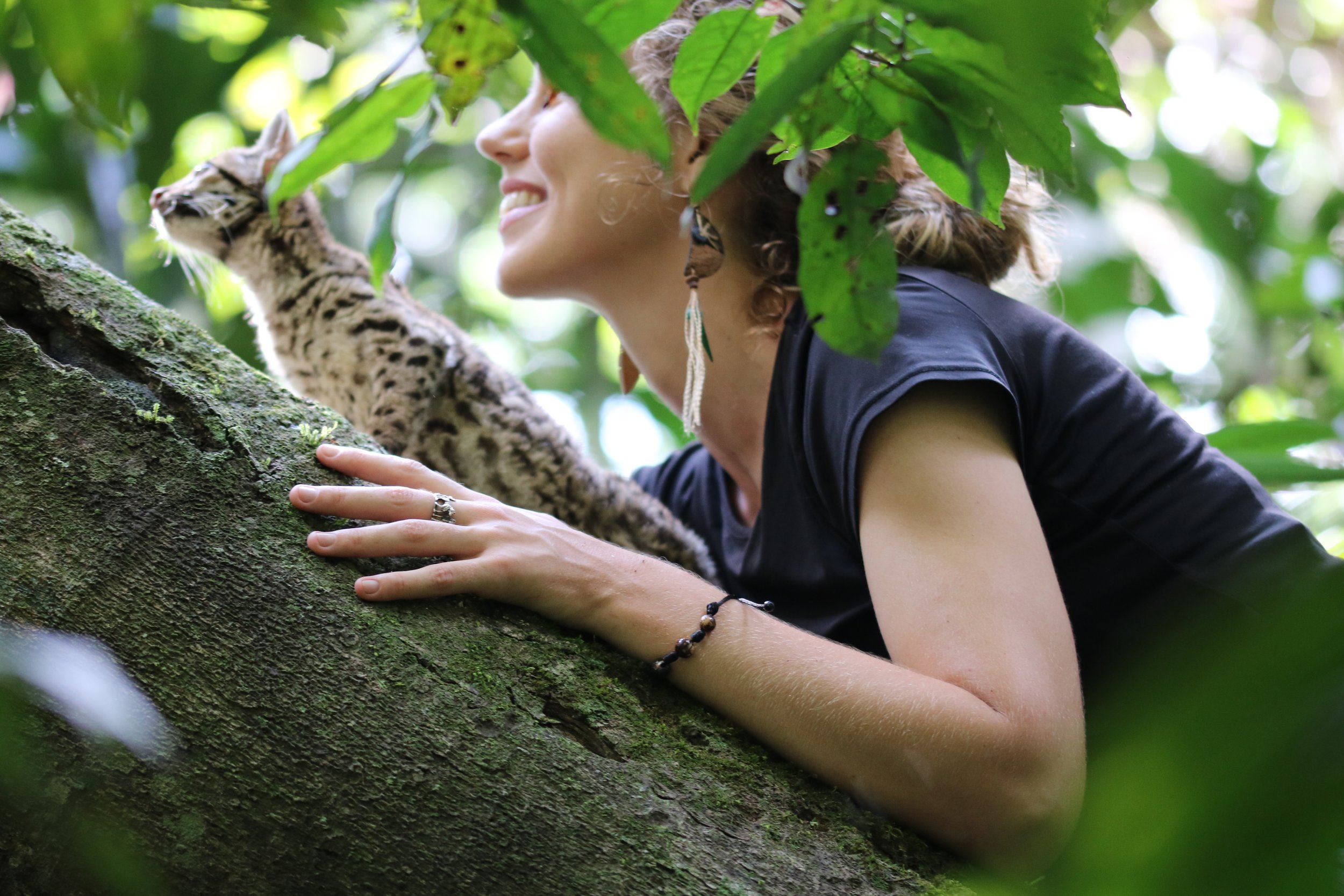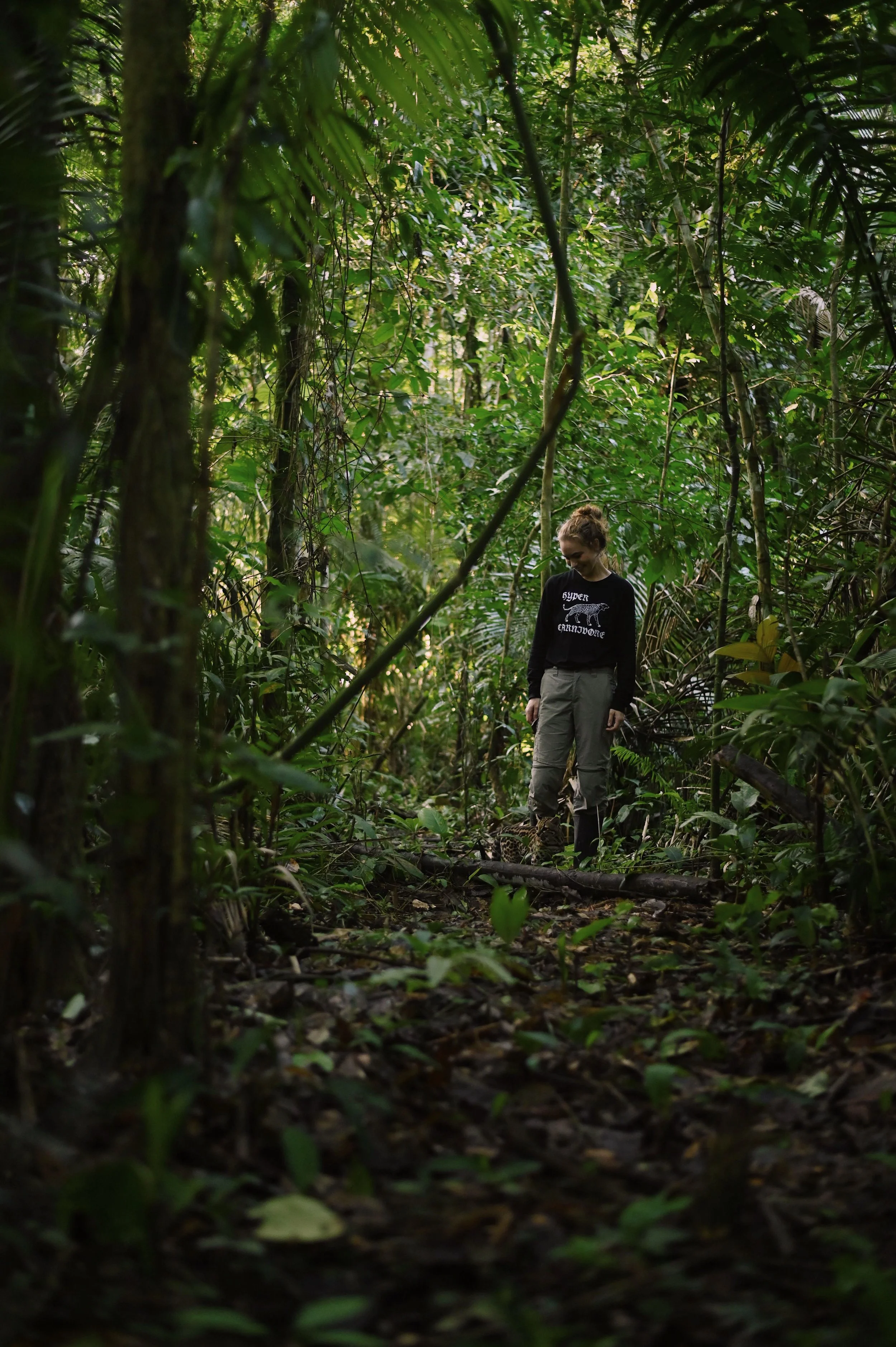a walk on the wild side
A Bainbrigde woman's quest to protect the Amazon rainforest and its wildlife
Words by Alorie Gilbert
ARTEMIS, A BABY JAGUAR, WAS KEPT AS A PET AND FACED AN UNCERTAIN FATE ON THE BLACK MARKET. MISKI, A MARGAY KITTEN, WAS SPOTTED IN A BACKPACK AT A BUSTLING URBAN MARKETPLACE. AND EYWA, A 3-MONTH-OLD TAPIR, WAS NEARLY CATATONIC WHEN RESCUED FROM POACHERS.
These are just a few of the 67 or so rescued jungle animals that currently reside at Hoja Nueva, a wildlife rehabilitation and rewilding center in the Peruvian Amazon with ties to Bainbridge Island. The center, located in the wild Madre de Dios region of southeast Peru, specializes in the rehabilitation and release of carnivores, specifically wild cats—the only such center in the country. Artemis, the center’s first jaguar rescue, arrived last August malnourished and weak, joining more than a dozen other wild cats there.
“She’s my little killer,” says Samantha Zwicker, a 2009 Bainbridge High School graduate who founded Hoja Nueva in 2015 at the age of 23. “She’s doing awesome.”
The story of Zwicker’s first wild cat rescues—ocelots Khan and Keanu—are the subject of the documentary film Wildcat, released by Amazon Studios in December. Keanu’s rehabilitation and release in 2019 was the first successful ocelot reintroduction ever documented and spurred Zwicker to expand her efforts. Through Hoja Nueva, she now owns 7,000 acres of one of the most biodiverse (and unprotected) places on earth. She’s taken in over 100 displaced creatures and employs a full time staff of seven, all while pursuing a PhD in quantitative ecology at the University of Washington.
Zwicker’s love of wilderness began with an outdoorsy if somewhat turbulent upbringing on Bainbridge, the details of which she shares in the film. Time spent in nature and with her family’s numerous pets and rescue animals were sources of comfort. Those interests eventually spurred her to earn degrees in environmental science, wildlife ecology and nonprofit management, and to participate in numerous conservation-related internships. One of them took her to Peru where she witnessed mining and its destructive impact on the rainforest, and she met a group of conservationists in the Las Piedras district where she now resides. She also became fluent in Spanish, facilitated by four years of instruction at BHS.
“The more I learned, I just fell in love with the place,” says Zwicker. She started Hoja Nueva with a focus on community development and environmental education on 75 acres of land, purchased for just $900. Initial funding came from a sustainable fashion venture raising funds for conservation, which Zwicker started with a Seattle friend. Her wildlife research involved camera traps, requiring little direct contact with animals. “I was always a wildlife person, but I never really thought of the hands-on aspect.”
That all changed when she and her staff rescued an infant ocelot from a group of loggers in the area with the goal of reintroducing it to the wild. The animal otherwise faced a bleak future at one of several zoos, Zwicker says.
Hoja Nueva was not an official rescue center at the time and keeping ocelots is illegal in Peru, so Zwicker had to obtain permits and comply with a multitude of regulations. The process was a revelation. “It was eye-opening to know how many animals the government takes in in our region,” Zwicker notes. “Looking at Peru, they probably seize around 5,000 animals every year and the majority don’t have a place to go, especially a good place that will put in the effort to reintroduce them.”
Bainbridge High School graduate Samantha Zwicker rehabilitates wild cats for release in Peru at Hoja Nueva, the nonprofit she founded in 2015. The government there seizes around 5,000 displaced animals annually as humans encroach on their rainforest habitat.
Zwicker and her then-partner Harry Turner, a young British war veteran, learned by trial and error, filming their work with the ocelot they named Khan. That footage and subsequent video shot over 18 months with the second ocelot became the basis for Wildcat. The documentary came about from a chance encounter with National Geographic photographer and first-time filmmaker Trevor Frost. Much of it focuses on the bond Turner forms with the charismatic cats and the difficulty he has separating from them as he struggles with depression and war trauma.
Zwicker and her staff now approach the job very differently. They minimize human contact with the animals and keep them in a much larger enclosure. They’ve released six wild cats and dozens of other rainforest denizens—peccaries, tayras, kinkajous and coatis—all key species threatened by trafficking and deforestation.
As for the film, Zwicker is adjusting to life in the spotlight. She hopes audiences care as much about the ecological story —the plight of the animals and the threats they face—as the human one at the center of the film. With the entire ecosystem at risk, it’s cause for global concern given the rainforest’s critical role in mitigating climate change.
“I feel ready to be a spokesperson for our type of work ... all the important stuff that takes a bit of a backseat in the film,” says Zwicker. “I can get to those big issues, like wildlife trafficking, and it gives me that platform to slide those things in.”






To learn more about Hoja Nueva’s multifaceted mission to protect rainforest habitat and to donate, visit hojanueva.org.
Photos: courtesy of HojaNueva


